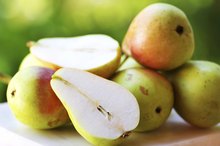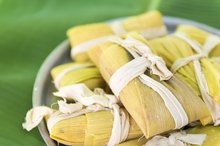Indian Vegetables & Fruits That Help to Reduce Weight
Two out of every 3 adults in the United States is either overweight or obese, according to the National Institute of Diabetes and Digestive and Kidney Diseases. Carrying excess weight increases your risk of diabetes, heart disease, osteoarthritis, liver disease and certain types of cancer. If you enjoy Indian food and you're struggling with your weight, a number of low-calorie, high-fiber fruits and veggie options can fit into any healthy weight-loss plan.
Weight-Loss Basics
To lose weight, you need to create a calorie deficit by eating fewer calories than your body needs to maintain its current weight. The healthy way to achieve this deficit is by filling your diet with low-calorie, nutrient-dense foods that fill you up while reducing your calorie intake. Making healthy Indian fruits and vegetables the basis of your weight-loss diet is a good way to go.
Indian Vegetables
Fruit & Fatty Liver
Learn More
A 1/2-cup serving of cooked or 1 cup of a raw nonstarchy vegetable has an average of only 25 calories. Indian nonstarchy vegetables include papdi, lauki, chukandar, lady's fingers, parwar, valore, ridge gourd, suva bhaji, surgavo, palak, taro roots and leaves, brinjal, guvar, carrots, mung bean, karela, greens, kankoda, lettuce and tomatoes.
Starchy vegetables also make a healthy addition to your diet, but they're higher in calories than the nonstarchy varieties. A 1/2-cup serving of corn, 1 cup of mixed peas and corn, a small potato, a 1/2-cup serving of low-fat potato subji or 1 cup of squash each contains approximately 80 calories per serving.
Indian Fruit
In general, one serving of Indian fruit has 60 calories. Good choices include a small apple or orange, 1/2 cup of mango, a small banana, 17 small grapes, one medium sapota or seetaphal, two small plums, 1 1/4 cup of watermelon, 1 cup of papaya cubes or three dates.
Fruit and Veggie Diet Tips
Nutritional Value of Carrots and Celery
Learn More
Fill half your plate with nonstarchy vegetables to help keep you full on the fewest calories. Use starchy vegetables in place of your usual starch, such as rice or roti. Instead of a sweet dessert, such as bhujja or handava, end your meal with low-calorie, naturally sweet fruit.
Even if you're eating mostly healthy foods, eating too many calories can lead to weight gain. Track your intake to help you stay within your weight-loss calories.
Related Articles
Writer Bio
Jill Corleone is a registered dietitian and health coach who has been writing and lecturing on diet and health for more than 15 years. Her work has been featured on the Huffington Post, Diabetes Self-Management and in the book "Noninvasive Mechanical Ventilation," edited by John R. Bach, M.D. Corleone holds a Bachelor of Science in nutrition.









